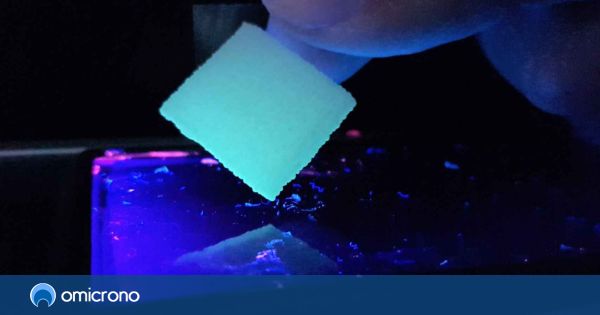
Related news
3D printing is becoming an unconditional support for medical research. In Spain we have seen the manufacture of key parts for complex surgeries and now serves as a method of production of a smart patch capable of healing chronic wounds in a custom way that has been developed by research teams from the United States and South Korea.
There are many and very varied pathologies that they cause a simple wound not to heal, Diabetes and circulatory disorders are a good example. These wounds end up becoming chronic, a health problem for which right now there are not many effective treatments.
The union between the materials science and 3D printing could give with the key. A team of different medical institutions from the United States and South Korea have developed a patch that allows you to customize the treatment for each patient and improve the healing options for these wounds.
Reacts to light
The 3D printed patch has antibacterial properties, supplies oxygen and moisture to the wound to encourage the formation of new tissue. The properties that each patient needs can be modified and controlled with irradiation.

University of Kiel
Omicron
The basis of this patch is medical hydrogel which is made up of 90% water, is special for chronic dry wounds that need more hydration to regenerate. After water the most important component of this material are antibacterial zinc oxide microparticles, Which react to light.
The University of Kiel, together with a team from Harvard and Brigham Hospital, found a way to apply special proteins to microparticles. These proteins are activated by green light and stimulate the formation of new blood vessels, which translates into new tissue to close the wound.
“By controlling the effects of the patch with light, we can adjust the course and dose of treatment to the individual needs of patients, ”explained Rainer Adelung, a professor of nanomaterials at Kiel.
smart materials
In materials science it is called these compounds that react with external stimuli and can be controlled as intelligent materials. This is not the first smart hydrogel patch to be developed, the other designs use electrical and heat signals. However, as Adelung explains, these systems heat up the wound and the patch eventually disintegrates.
The study has been published in the scientific journal Advanced functional materials and it is signed by a number of institutions that have collaborated internationally in the project: the University of Kiel (CAU), the University Medical Center of Schleswig-Holstein (UKSH), the Harvard Medical School and the Dankook University in South Korea, are the main ones.
Evidence shows that the patch improves wound healing and presents a good level of tolerance. “It is a tangible example of the promising potential of collaboration between medicine and materials science, which will be increasingly important in the future,” he told the magazine Phys Professor Fickenscher, specialist in infection medicine at the CAU.